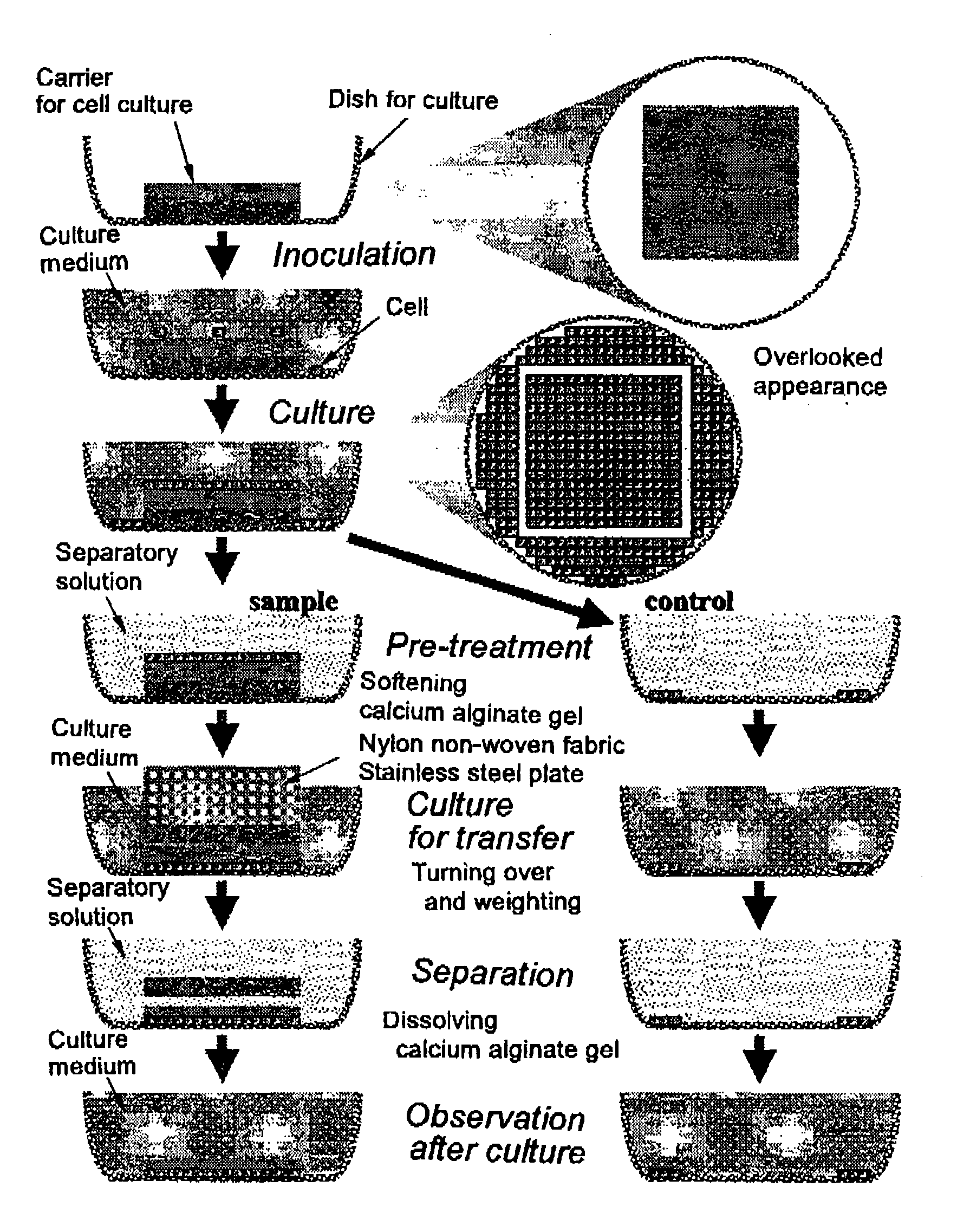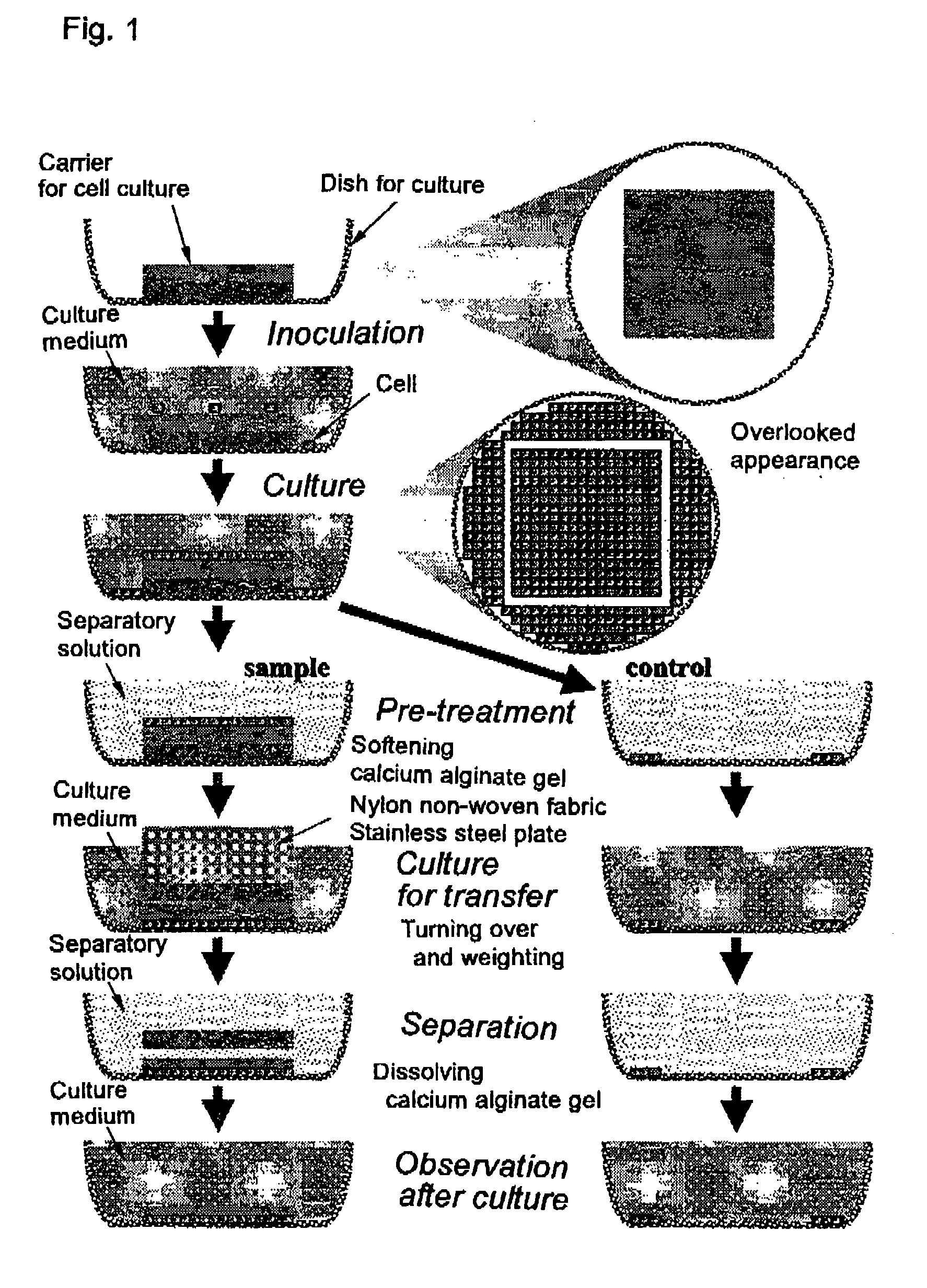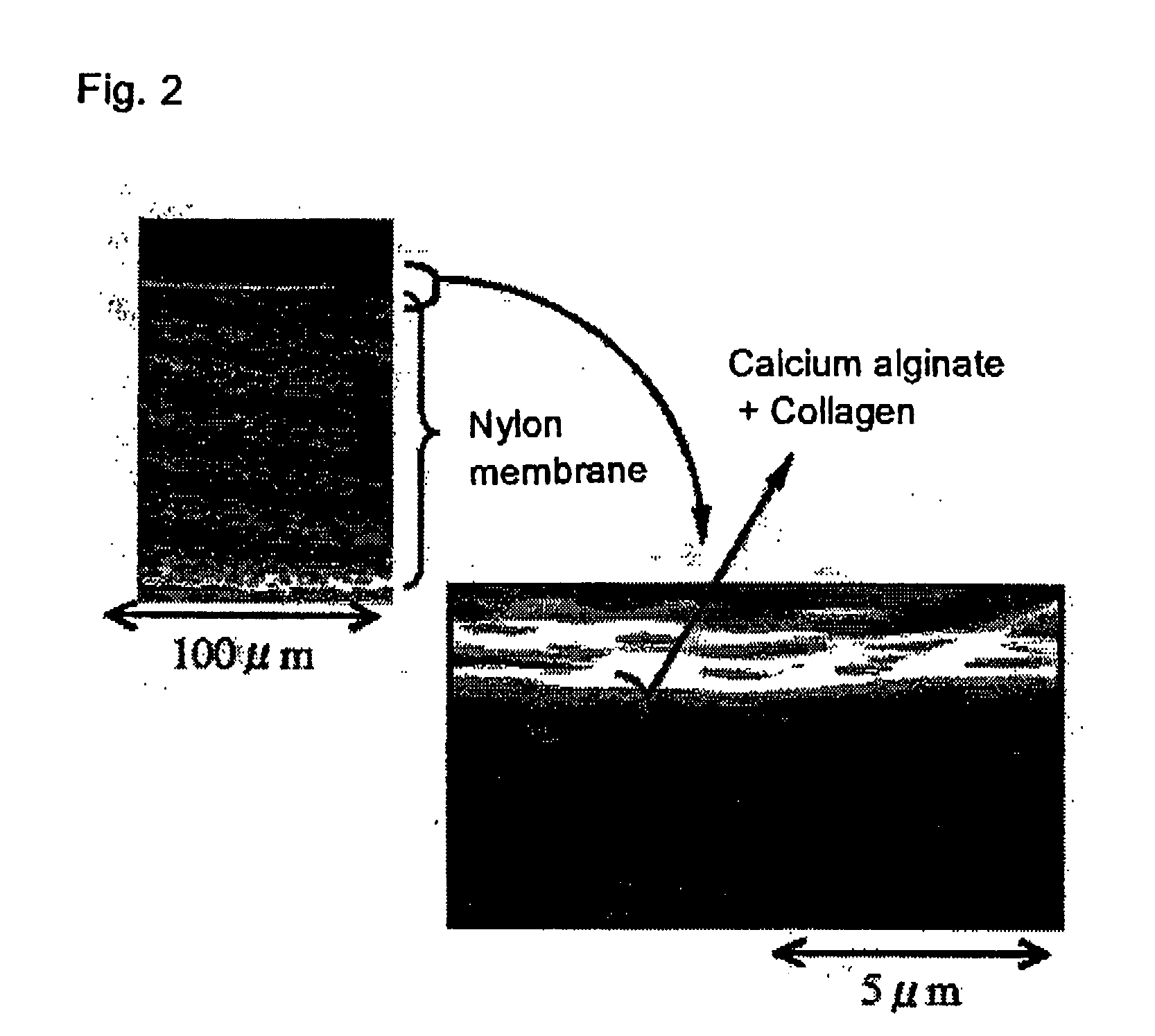Carrier for cell culture
a cell culture and carrier technology, applied in the field of carriers for cell culture, can solve the problems of inability to expect stable growth of cells, inability to form ecm required for cell adhesion, and sometimes observed phenomenon of inhibition of normal cell growth
- Summary
- Abstract
- Description
- Claims
- Application Information
AI Technical Summary
Problems solved by technology
Method used
Image
Examples
example 1
Preparation of Carrier for Cell Culture
[0037] (1) Preparation of Nylon Microfilter
[0038] 13.7 g of 6-nylon was dissolved in 66.3 g of formic acid, left overnight, added with 20 ml of water and dispersed by using a homogenizer to obtain a nylon dope. The obtained nylon dope was applied on a stainless steel substrate with a thickness of 250 ml / m.sup.2, and the coated substrate was immersed in a 45 weight % aqueous solution of formic acid. After the coated layer became sufficiently cloudy, the coated substrate was washed with running water to obtain a nylon microfilter. The nylon microfilter was stored in water without dryness.
[0039] (2) Formation of Calcium Alginate Layer
[0040] (i) Preparation of Simple Calcium Alginate Membrane with Glass Substrate
[0041] An aqueous solution containing 1 weight % of sodium arginate (produced by Wako Pure Chemical Industries), 8.2 weight % of 1-ethyl-3-(3-dimethylaminopropyl)carbodiimide hydrochloride (WSC, produced by Peptide Institute), 0.84 weight %...
example 2
Sterilization
[0050] When the membrane Ib obtained in Example 1 was subjected to each of six different sterilizations, i.e., UV sterilization for 1, 2 and 3 hours and electron beam sterilization at 20, 40, 60, 80 and 100 kGy, no bacterium was found in each of the samples. In the samples not subjected to any sterilization treatment, 5900 cells / m.sup.2 of bacteria were found. However, the samples subjected to electron beam sterilization at 60, 80 or 100 kGy were found to be discolored, and any of the layers constituting the membranes was possibly denatured. The discoloration was remarkable in the samples subjected to electron beam sterilization at 80 or 100 kGy.
example 3
Cell culture Utilizing Carrier for Cell Culture
[0051] Cells were cultured by using the carrier for cell cultures as follows.
[0052] (1) Used Cell
[0053] CHL (Chinese Hamster Lung Cell)
[0054] (2) Used Medium
[0055] Eagle's minimum medium containing 10% bovine fetal serum
[0056] (3) Carrier for Cell Culture
[0057] The carrier for cell cultures prepared in Example 1, adhered to bottom surfaces of polystyrene cell culture dishes with double-sided tapes, and a polystyrene cell culture alone as a comparative example were subjected to UV sterilization or electron beam sterilization. The operation, wherein the medium was added to the dishes to immerse the carrier for cell cultures for 5 minutes and then the medium was exchanged, was repeated three times, and then the dishes were left overnight to allow the medium to infiltrate into the carrier for cell cultures. The combinations of the used carrier for cell cultures and sterilization methods are shown in Table 1.
[0058] (4) Inoculation of Cells
[0...
PUM
| Property | Measurement | Unit |
|---|---|---|
| thickness | aaaaa | aaaaa |
| thickness | aaaaa | aaaaa |
| temperature | aaaaa | aaaaa |
Abstract
Description
Claims
Application Information
 Login to View More
Login to View More - R&D
- Intellectual Property
- Life Sciences
- Materials
- Tech Scout
- Unparalleled Data Quality
- Higher Quality Content
- 60% Fewer Hallucinations
Browse by: Latest US Patents, China's latest patents, Technical Efficacy Thesaurus, Application Domain, Technology Topic, Popular Technical Reports.
© 2025 PatSnap. All rights reserved.Legal|Privacy policy|Modern Slavery Act Transparency Statement|Sitemap|About US| Contact US: help@patsnap.com



